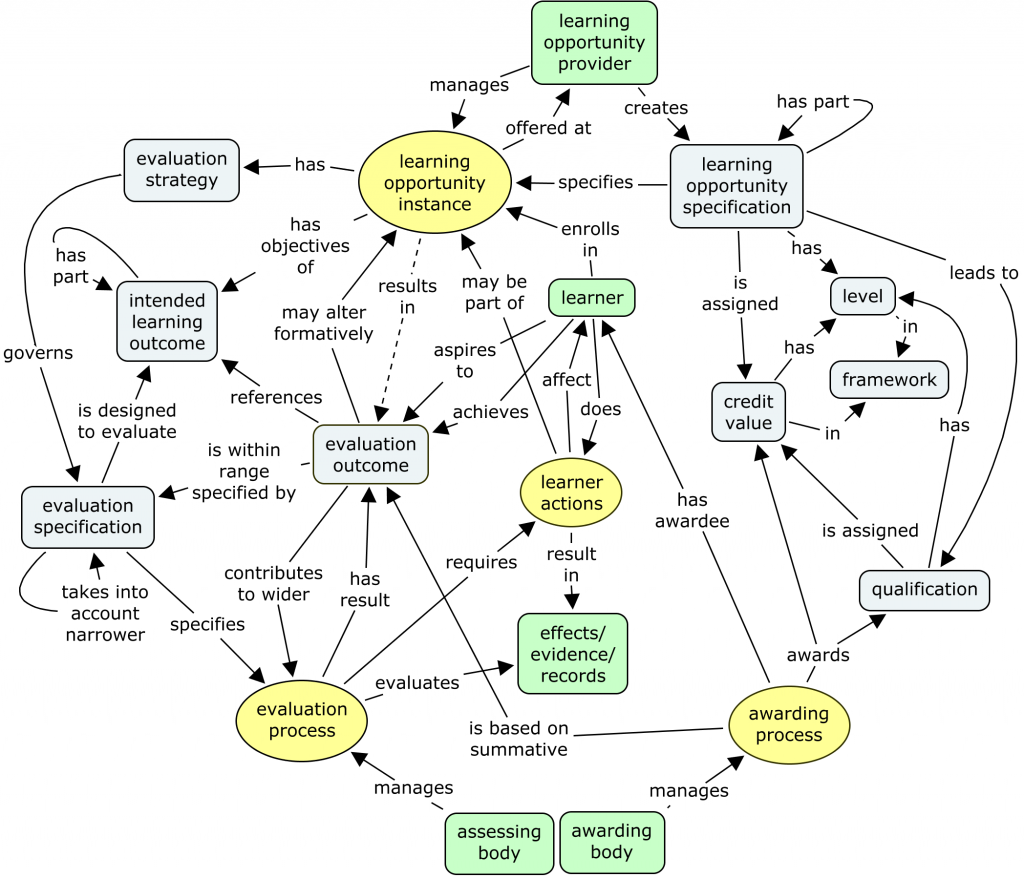Reflecting on the challenging field of conceptual models, I thought of the idea of exposing my evolving conceptual model that extends across the areas of learner mobility, learning, evaluation/assessment, credit, qualifications and awards, and intended learning outcomes — which could easily be detailed to cover knowledge, skill and competence.

This is more or less the whole thing as it is at present. It will evolve, and I would like that to illustrate how a model can evolve as a result of taking into account other ideas. It also wants a great deal of explanation. I invite questions as comments (or directly) so that I can judge what explanation is helpful. I also warmly welcome views that might be contrasting, to help my conceptual model to grow and develop.
It originates in work with the European Learner Mobility team specifying a model for European Learner Mobility documents — that currently include the Diploma Supplement (DS) and Certificate Supplement. This in turn is based on the European draft standard Metadata for Learning Opportunities (MLO), which is quite similar to the UK’s (and CETIS’s) XCRI. (Note: some terminology has been modified from MLO.) Alongside the DS, the model is intended to cover the UK’s HEAR — Higher Education Achievement Report. And the main advance from previous models of these things, including transcripts of course results, is that it aims to cover intended learning outcomes in a coherent way.
This work is evolving already with valued input from colleagues I talk to in
- JISC CETIS
- the European Learner Mobility team
- the ICOPER project
- CEN/ISSS WS-LT
- MedBiquitous
- ISO SC36
but I wanted to publish it here so that anyone can contribute, and anyone in any of these groups can refer to it and pass it round — even if as a “straw man”.
It would have been better to start from the beginning, so that I could explain the origin of each part. However that is not feasible, so I will have to be content with starting from where I am, and hoping that the reasoning supporting each feature will become clear in time, as there is an interest. Of course, at any time, the reasoning may not adequately support the feature, and on realising that I will want to change the model.
Please comment if there are discrepancies between this model and your model of the same things, and we can explore the language expressing the divergence of opinion, and the possibility for unification.
Obviously this relates to the SC36 model I discussed yesterday.
See also the next version.